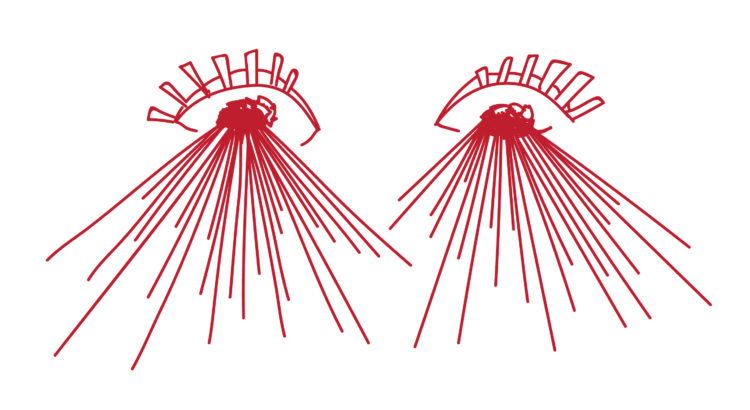In 2017, I became fascinated with stenciling, image manipulation, and silk screen printing, and this was due to artists like Shepard Fairey. Born in Charleston but residing in LA, Fairey is a well known graphic artist who commonly works with portrait images to create meaningful messages whether it be fine art or graffiti. He got his Bachelor of Fine Arts at RISD in the early 90s at around the same time he created his first art revolution that took over the streets of Providence, RI.

Attending middle and high school in Providence, I was surrounded by the art encapsulating the city. RISD was right downtown and my friends and I would constantly hangout there. The first time I saw Fairey’s work was in the form of a sticker on a telephone post on Thayer St.–which is the S. State St. of Brown University. As I looked at the sticker that could be no bigger than 3”x4”, my friend told me over my shoulder that the sticker was Andre the Giant. I replied with, “Who?” She then told me Andre the Giant was a pro wrestler in the 1980s and that these stickers are all around Providence. I then asked, “Why?”, and she shrugged her shoulders.

I remember not bothering with this “Andre the Giant” sticker until later on when I noticed it was everywhere and in different sizes/mediums. It was on walls, telephone posts, sidewalks, billboards, cars, etc. I didn’t understand why it was consuming the city and I didn’t understand why it was Andre the Giant. It made no sense to me but I wanted to be apart of it. I wanted to give someone that feeling of confusion and wonder. Fast forward to my online black hole search of Shepard Fairey.

Fairey was a skateboard punk lovin artist in the 90s who wanted nothing more than to prove that he existed. He believed that a majority of what he was interested by and the hidden stories that he thought people should talk about were found in the skateboard and punk rock communities. He was apart of the “do-it-yourself” era where young people were seen creating their own advertisements and fashion. Fairey was inspired by graffiti and poster making causing him to wedge himself in and become apart of the movement. He created the image of Andre the Giant as sort of a joke from a newspaper ad. Fairey began sticking these abstract portraits up all around Providence to symbolize himself condemning his own interests. He wanted people to be confused, look at the details in his abstract image, and wonder, “Why?” Shepard Fairey realized he could cause change and impact after his image of Andre the Giant became something familiar to residents of Providence. This phenomenon sparked Fairey’s career, led him to create his OBEY empire, and also become one of the top influential artists of our time.
Shepard Fairey is someone I look up to not only because of his inspirational work but mostly because he didn’t care what people thought of his work even from the beginning. He just wanted to be something which is what almost everyone wants but he was different because he was confident enough to do it and succeeded. To put it in a short sentence, he grew from being a college student in a small city to a widely known artist who created the infamous campaign poster of Barack Obama. Like…wut.

Today, Fairey is fighting copyright issues pertaining to this image of Obama and in the past he has also dealt with issues with the law because his art is seen as vandalization. To create his existence in the world, Fairey believed to put his art everywhere so people would HAVE to look. I believe in human ownership rights but there also comes a line in my opinion, especially with art. One can simply not take someone’s art and claim it as their own, however I do believe in using someone’s art to inspire you to create. Fairey is in trouble because he takes images from Google as references and manipulates them into his graphic art. Furthermore, graffiti is a way of communicating expression with rebellion. Getting your work into the public eye without permission and without instant gratification interests me because it is a personal way of displaying art. The artist creates conversation with the world but also sparks a discussion of what their responsibility to the world is.
As an art student with a passion for storytelling, I believe anyway to get your message across is art to me. I get excited especially when individuals have the courage to share their expression without hesitation. Graffiti has its faults but so does every single little puny tiny lil thing in the world. I mean don’t even get me started with discussing art galleries…
Whether or not I understand his work or don’t, I will forever be enamored by Shepard Fairey’s use of art to create his voice and his way to live fearlessly through art. Fairey and other artists that arose in the street art movement face harassment and it is to each their own what they think of them. However, these artists will create no matter what their audience believes and this is why they have become some of the most influential conversation starters, as well as why I believe they should themselves be talked about and receive recognition.

Afterthought:
Some fun questions I like to ask many people are, “Is graffiti art?” and ,“Is graffiti wrong?” Everyone has different perspectives and beliefs so it is interesting to collect their answers and why they believe this way.
work cited:
“About Shepard Fairey Biography.” Streetartbio, http://www.streetartbio.com/shepard-fairey.
Moll, James, director. Obey Giant. Hulu, Allentown Productions; Elysium Bandini Studios; Thruline Entertainment.















